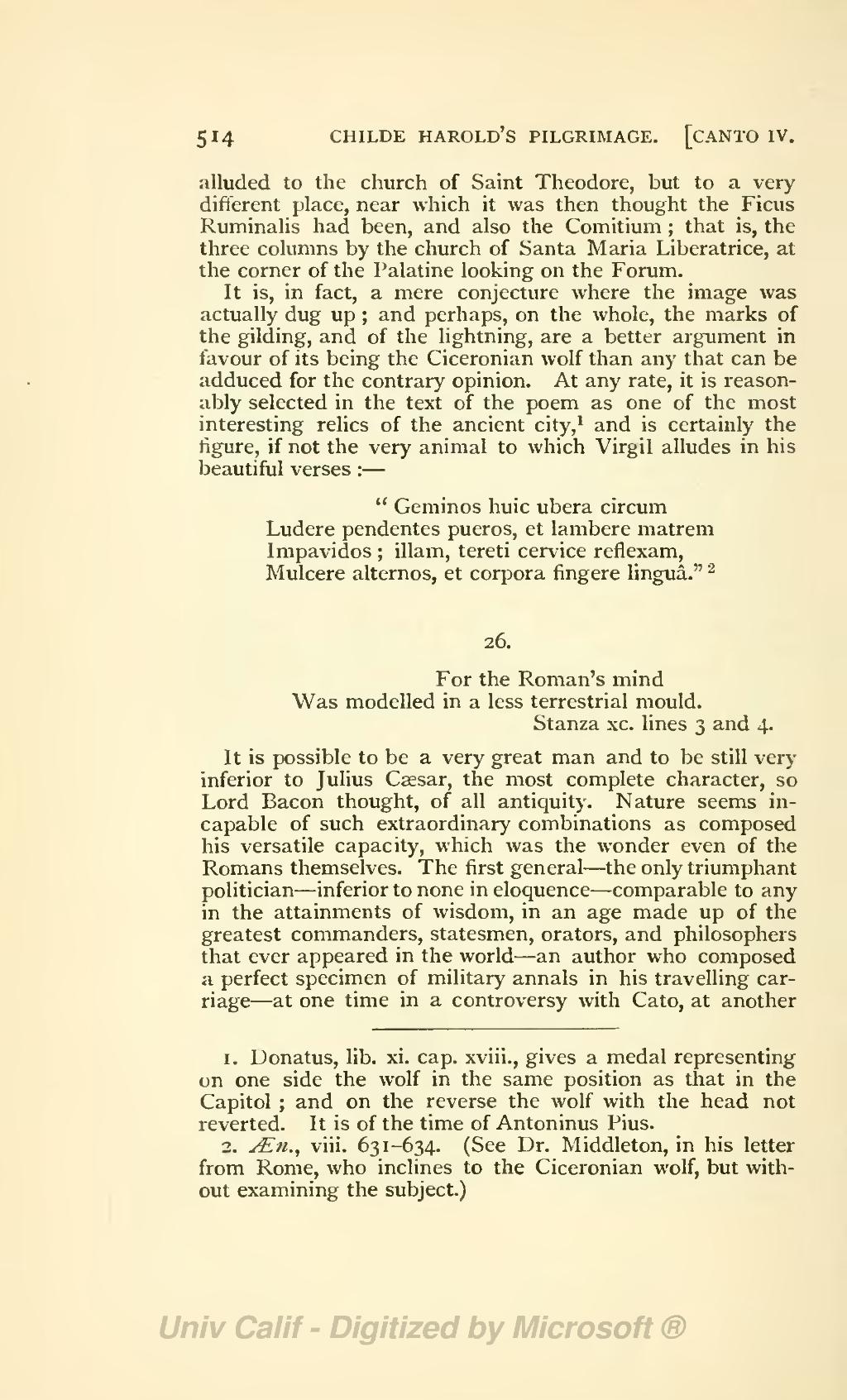alluded to the church of Saint Theodore, but to a very different place, near which it was then thought the Ficus Ruminalis had been, and also the Comitium; that is, the three columns by the church of Santa Maria Liberatrice, at the corner of the Palatine looking on the Forum.
It is, in fact, a mere conjecture where the image was actually dug up; and perhaps, on the whole, the marks of the gilding, and of the lightning, are a better argument in favour of its being the Ciceronian wolf than any that can be adduced for the contrary opinion. At any rate, it is reasonably selected in the text of the poem as one of the most interesting relics of the ancient city,[1] and is certainly the figure, if not the very animal to which Virgil alludes in his beautiful verses:—
"Geminos huic ubera circum
Ludere pendentes pueros, et lambere matrem
Impavidos; illam, tereti cervice reflexam,
Mulcere alternos, et corpora fingere linguâ."[2]
26.
For the Roman's mind
Was modelled in a less terrestrial mould.
Stanza xc. lines 3 and 4.
It is possible to be a very great man and to be still very inferior to Julius Cæsar, the most complete character, so Lord Bacon thought, of all antiquity. Nature seems incapable of such extraordinary combinations as composed his versatile capacity, which was the wonder even of the Romans themselves. The first general—the only triumphant politician—inferior to none in eloquence—comparable to any in the attainments of wisdom, in an age made up of the greatest commanders, statesmen, orators, and philosophers that ever appeared in the world—an author who composed a perfect specimen of military annals in his travelling carriage—at one time in a controversy with Cato, at another
- ↑ Donatus, lib. xi. cap. xviii., gives a medal representing on one side the wolf in the same position as that in the Capitol; and on the reverse the wolf with the head not reverted. It is of the time of Antoninus Pius.
- ↑ Æn., viii. 631-634. (See Dr. Middleton, in his letter from Rome, who inclines to the Ciceronian wolf, but without examining the subject.)
